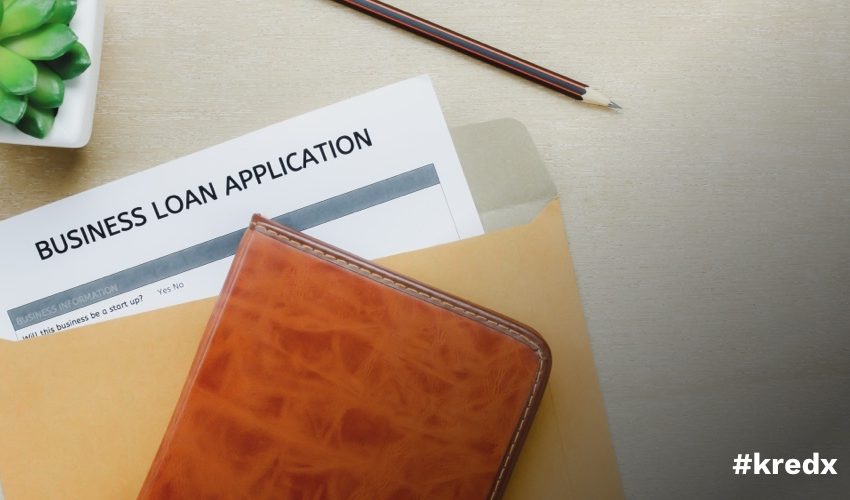
5 Steps To Apply For MSME Loan
The MSME sector is one of the key drivers in the Indian economy that accelerates its growth. In 2020, it contributed about 45% of the country’s total industrial output and 40% to its exports.
However, despite their significance in the current economic system, micro, small and medium enterprises still face a continual working capital crunch.
So, how do these smaller market players operate in today’s dynamic economy without the required funds?
The Reserve Bank of India defines an MSME loan as a form of credit extended to small-scale businesses in need of financial assistance. Until a few years ago, only a handful of banking institutions offered MSME loans, by way of an extensive procedure. However, today, small business owners can easily avail an MSME loan from a plethora of institutional sources.
Here is a rundown on how to apply for an MSME loan in just 5 simple steps:
Step 1: Analyse Business Requirements
First and foremost, a business owner must gain clarity on why he/she requires a loan. Before applying for an MSME loan, it is imperative that one determines the exact business needs.
Business owners need to pick their preferred type of loan from many alternatives, such as a working capital loan, machinery loan or a top-up loan, based on those requirements.
Do you intend to invest in an expansion opportunity? Or, does your business need an influx in operational funds? Answering these questions will help a business owner avail the right type of loan. Furthermore, determining business requirements puts an MSME in a better position to convince its financier about the end purpose of the desired loan.
Step 2: Find The Right Lender
Today, micro, small and medium enterprises have the liberty to choose a financier from various options. However, the large number of lending institutions in the present market often creates a paradox of choice, which can easily overwhelm business owners.
To that end, business owners must analyse their lending partner’s interest rate, terms and policies, eligibility criteria, and EMI amount. One must proceed to apply for MSME loans only after acquiring considerable information on the factors mentioned above.
Step 3: Apply For MSME Loans Online
All financial institutions accept applications for MSME loans by way of easy digital processes. After due research and choosing a preferred financier, business owners can simply apply for an MSME loan online. For this, one should visit the lending institution’s official website and fill out an application form.
An MSME loan application form typically requires organisational information, such as:
- Name of the enterprise
- Date of incorporation
- Registration number
- Business address
- Trade licence number
- Monthly turnover for the last 12 months
- Purpose of the loan
Step 4: Submit Relevant Documents
Alongside a duly filled application form, financial institutions mandate businesses to submit vital documents for the verification process. Here are some of the required documents that one must provide:
- Proof Of Identity: Individuals can submit their Aadhaar card, passport, PAN card, Voter’s ID, or driving license to prove their identity (and age verification).
- Proof Of Residence: Financial institutions in India accept one’s electricity bill, trade license, ration card or lease agreement as his/her address proof.
- Financial Documents Of The Business: Documents such as audited balance sheet, profit and loss statement, projected turnover, Income Tax Return (ITR) of the last two years, and bank statements of the previous 6 months are accepted as financial documents.
- Business Proof: Businesses must provide their registration certificate, other certificates that validate their existence, a Memorandum of Association (MOA), or Articles of Association (AOA).
A point to remember here is to keep these documents ready beforehand so that businesses can get quicker approvals on their MSME loans. Financial institutions require borrowers to upload scanned copies of these documents on their digital platforms.
Step 5: Get The Desired Funds
Lending institutions approve a loan and disburse the same as soon as all the documents are verified. The processing time of these loans varies with each financial institution.
When facing a cash crunch, MSMEs can alternatively opt for other financing sources, such as invoice discounting. This financing solution lets businesses obtain quick funds against their unpaid invoices. This way, enterprises can release the tied-up funds in their bills ahead of the due date to resolve any cash flow-related issues.
Bottom Line
In this day and age, MSMEs must be astute enough to utilise their available financial resources and augment them. Small-scale businesses can leverage MSME loans to access funds easily, accelerate their business growth, and achieve goals in the long run.



